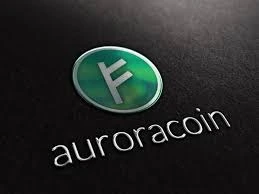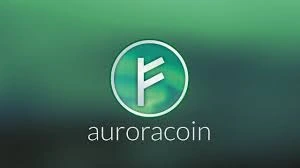Auroracoin AUR | Iceland’s Decentralized Digital Currency
Table of Contents

Auroracoin is a Mineable Token that you can mine. If you want to learn more about an alternative coin and mineable token that can be mined, you can check Niftyfinances for more information.
Are you ready to explore a truly unique cryptocurrency? Auroracoin (AUR), the digital currency born from Iceland’s economic challenges, is making waves in the crypto world. Launched with the mission to provide financial freedom and decentralize power, AUR has a compelling vision for the future. Did you know that it was one of the first coins to have an airdrop for an entire nation? This article dives deep into Auroracoin’s features, its potential to revolutionize Iceland’s economy, and why it stands out in the cryptocurrency space. Let’s go!

What is Auroracoin (AUR)?
Auroracoin (AUR) is a cryptocurrency launched in 2014 with the vision of becoming the national digital currency of Iceland. Designed to serve as an alternative to the country’s reliance on traditional banking systems, AUR seeks to empower Icelanders with greater financial autonomy and control over their wealth.
Origin and Vision
Auroracoin was introduced during a time when Iceland faced significant economic challenges, including capital controls and reliance on foreign currency. Its creators believed that Iceland needed a decentralized and independent financial system. By providing an alternative to the Icelandic króna, AUR was envisioned to allow individuals to escape the traditional banking system and take control of their finances, offering a more democratic and inclusive financial ecosystem.
A Solution to Iceland’s Reliance on Traditional Banking
With Iceland’s banking system having suffered during the 2008 financial crisis, Auroracoin sought to offer an alternative, enabling Icelanders to circumvent the limitations and risks associated with traditional financial institutions. By using Auroracoin, residents could engage in direct peer-to-peer transactions without relying on intermediaries, allowing for greater economic freedom and privacy.
Key Features
- Fixed Supply: AUR has a capped total supply, making it resistant to inflation. This fixed supply mechanism ensures scarcity, which could increase its value over time, similar to Bitcoin’s model.
- Security: Built on the secure principles of blockchain technology, Auroracoin provides a tamper-proof and transparent financial system. Every transaction is recorded on the blockchain, ensuring its authenticity and preventing double-spending or fraud.
- Anonymity: Auroracoin focuses on offering privacy to its users, allowing for anonymous transactions. This feature enables users to engage in transactions without disclosing personal details, further enhancing its appeal for those concerned with privacy in digital finance.

How Auroracoin (AUR) Works:
Auroracoin (AUR) operates on a decentralized blockchain, providing a secure, transparent, and efficient way for users to transfer value. Its innovative use of blockchain technology helps ensure that AUR remains resistant to central control, offering Icelanders a peer-to-peer financial system that doesn’t rely on traditional banks or government institutions.
The Blockchain That Powers AUR and Ensures Decentralization
Auroracoin is built on a blockchain, a distributed ledger that records all transactions across a decentralized network of nodes. This means no single entity controls the network, ensuring that the currency remains censorship-resistant and free from central authority influence. The blockchain ensures that transactions are transparent and verifiable, but also allows for privacy and anonymity when using the currency. It provides a secure and decentralized environment where users can conduct transactions directly with one another, bypassing the need for banks or intermediaries.
Security Features and the Irreversibility of Transactions
The blockchain behind AUR uses advanced cryptographic techniques to protect the integrity and security of transactions. Each transaction is verified by multiple nodes on the network, ensuring that they are accurate and preventing fraudulent activities.
Once a transaction is added to the blockchain, it is considered irreversible, meaning it cannot be undone or altered. This provides an added layer of security for users, as the risk of chargebacks or fraud is minimized. Users can have confidence in the immutability and reliability of the system, knowing that their transactions cannot be tampered with or reversed.
How AUR Combats Inflation with Its Fixed Supply
One of the key features of Auroracoin is its fixed supply, which is designed to combat inflation. Unlike traditional fiat currencies, which can be printed or manipulated by central banks, AUR has a capped total supply of 21 million coins, similar to Bitcoin. This fixed supply creates scarcity, which helps protect the currency from inflation and ensures its long-term value.
By having a predictable and limited supply, AUR aims to function as a store of value that can be appreciated over time. As demand for the currency increases, its scarcity becomes a defining characteristic, potentially increasing its value. The fixed supply also ensures that the purchasing power of AUR is not eroded by the inflationary practices of central banks, making it an appealing option for users looking to safeguard their wealth.

How to Buy and Store Auroracoin (AUR) Safely
Buying and storing Auroracoin (AUR) involves a few essential steps to ensure the safety of your funds. This guide will walk you through the process of acquiring AUR through exchanges, selecting secure wallets for storage, and implementing best practices for protecting your cryptocurrency.
A Step-by-Step Guide to Acquiring AUR Through Exchanges
- Choose a Reliable Exchange: To purchase Auroracoin, you’ll first need to find a cryptocurrency exchange that lists AUR. Some popular exchanges that have historically supported AUR include Bittrex, and sometimes decentralized exchanges (DEXs). Make sure to research which exchanges currently support AUR and are trustworthy.
- Create an Account on the Exchange: Once you’ve selected an exchange, you’ll need to create an account. This typically involves providing your email address, setting up a password, and going through a verification process. Some exchanges may require identity verification (KYC) depending on the regulations in your region.
- Deposit Funds Into Your Exchange Account: You’ll need to fund your exchange account to make a purchase. Many exchanges accept deposits in fiat currency (such as USD, EUR, or others) or in other cryptocurrencies like Bitcoin or Ethereum. Choose the funding method that works best for you and deposit the desired amount.
- Buy Auroracoin (AUR): Once your account is funded, go to the trading section of the exchange and search for AUR. Choose the trading pair that corresponds to your deposit method (e.g., AUR/USD or AUR/BTC), and place an order to buy AUR. You can place a market order (which executes immediately at the current market price) or a limit order (which executes when the price hits a specified level).
- Confirm the Transaction: After the order is filled, confirm that AUR has been credited to your exchange wallet. You can now proceed to transfer the coins to your wallet for safer storage.
Recommended Wallets for Securely Storing Your AUR
To store Auroracoin safely, it’s important to use a secure wallet that supports AUR. Here are some wallet options for storing your AUR:
- Auroracoin Core Wallet (Desktop Wallet): The official wallet for AUR is the Auroracoin Core Wallet, which is available for download on the AUR website. It provides full control over your AUR, allowing you to store your coins securely on your computer. The wallet also allows you to interact directly with the Auroracoin blockchain.
- Hardware Wallets (e.g., Ledger, Trezor): For maximum security, hardware wallets such as Ledger or Trezor are excellent choices. These wallets store your private keys offline, protecting your coins from online threats like hacking and malware. While Auroracoin may not be natively supported by all hardware wallets, you can use compatible wallets like Electrum or others to store your AUR securely.
- Mobile Wallets: Some mobile wallets, such as Coinomi or Exodus, may support Auroracoin. These wallets allow you to manage your AUR on your smartphone, offering convenience along with secure encryption.
Safety Measures to Ensure Your Funds Are Protected
To protect your AUR and any other cryptocurrency, consider implementing these safety measures:
- Enable Two-Factor Authentication (2FA): Always enable 2FA on your exchange account and wallet (if available). This adds an extra layer of protection, requiring you to verify your identity through a second method (usually a mobile device) in addition to your password.
- Use a Secure Connection (VPN and HTTPS): When accessing your exchange or wallet, make sure you’re using a secure internet connection. Avoid using public Wi-Fi networks for transactions. You can use a VPN to mask your IP address and ensure privacy when transacting.
- Backup Your Wallet: Most wallets allow you to create a backup of your private keys or recovery phrases. Store this backup securely in multiple locations (e.g., in a safe, offline). If you lose access to your wallet, having the backup ensures you can recover your funds.
- Avoid Phishing Scams: Be cautious of phishing scams that attempt to trick you into providing your login credentials or private keys. Always double-check URLs and ensure you are on the official website before logging in or downloading any software.
- Withdraw AUR to Your Wallet: For long-term storage, it’s always best to transfer your AUR from the exchange to a personal wallet that you control. Keeping your cryptocurrency on an exchange exposes you to potential risks such as exchange hacks or insolvency.
The Mining Process Behind Auroracoin:
Auroracoin (AUR) operates on a proof-of-work (PoW) consensus mechanism, similar to Bitcoin, where miners play a crucial role in securing the network, validating transactions, and ensuring the overall integrity of the blockchain. The mining process not only powers the Auroracoin network but also contributes to decentralization and the protection of the financial system. Let’s take a closer look at how AUR mining works and its impact on the network.
Mining AUR and Its Impact on Network Security and Decentralization
Miners are responsible for verifying and validating transactions on the Auroracoin network. This process involves solving complex cryptographic puzzles that require significant computational power. Once a miner successfully solves a puzzle, they are rewarded with newly minted AUR and have the right to add a new block to the blockchain.
By participating in the mining process, miners help secure the Auroracoin network. Since mining is decentralized, with many independent miners participating across the globe, the network becomes more resistant to attacks or control by any single entity. This decentralization ensures that no one can alter or manipulate the blockchain, making Auroracoin a trustless and secure cryptocurrency.
Additionally, the proof-of-work system ensures that any changes to the blockchain require a majority of miners to agree on the validity of transactions. This creates a robust and tamper-resistant system where fraud or double-spending becomes extremely difficult, as altering any block would require re-mining all subsequent blocks, an incredibly resource-intensive task.
The Process and Rewards for Miners
The mining process begins with miners using their computational power to compete in solving a cryptographic puzzle. When a miner solves the puzzle, they add a new block to the blockchain and broadcast it to the network. This process is known as “mining a block.”
In return for their efforts, miners are rewarded with newly minted AUR coins and transaction fees paid by users of the network. The block reward is designed to decrease over time, a feature known as “halving,” similar to Bitcoin. This gradual reduction in rewards helps control the inflation rate of the cryptocurrency and ensures a limited, finite supply of AUR (21 million total coins).
In addition to the block reward, miners receive transaction fees from users who make transfers on the network. As the network grows, these transaction fees become an increasingly important part of the incentive structure for miners, especially as the block reward continues to decrease.
The Importance of Mining to Maintaining the Integrity of the Auroracoin Ecosystem
Mining is critical to maintaining the integrity of the Auroracoin ecosystem for several reasons:
- Network Security: The mining process ensures that all transactions are validated and securely recorded on the blockchain. Miners check each transaction for accuracy, preventing double-spending and fraudulent activity. By securing the network, miners contribute to the overall safety of the currency.
- Decentralization: One of the core principles of Auroracoin is decentralization. Mining helps achieve this by ensuring that no single entity can control the network. With miners scattered across the globe, it becomes incredibly difficult for any group or individual to take over the system or manipulate transactions. This decentralized structure makes AUR more resilient and censorship-resistant.
- Incentivization and Sustainability: Mining rewards ensure that the network remains self-sustaining. Miners are incentivized to continue securing the network and verifying transactions, helping to maintain the blockchain’s integrity. The reduction in block rewards over time pushes miners to adapt and remain active in the ecosystem, ensuring the long-term viability of Auroracoin.
- Growth and Adoption: Mining encourages a broad base of participation in the Auroracoin network. The more miners are involved, the greater the distribution of AUR, which can drive adoption and support the currency’s value. As more users and miners participate, the network becomes more decentralized, secure, and valuable to the global community.
Profitability and Mining Resources Available for AUR Enthusiasts
Mining Auroracoin can be a profitable venture for enthusiasts, depending on several factors such as the cost of mining equipment, electricity consumption, and the current price of AUR. The profitability of mining is influenced by the difficulty of mining, which adjusts periodically to ensure that new blocks are added to the blockchain at a consistent rate.
- Profitability: The profitability of mining AUR depends on the miner’s efficiency and the available resources. Miners are rewarded with newly minted AUR coins and transaction fees for verifying transactions and adding blocks to the blockchain. However, mining requires significant computational power, and the costs of mining equipment, electricity, and cooling systems can quickly add up. The fixed supply of AUR (21 million coins) means that over time, the reward for mining will decrease through halving events, similar to Bitcoin. As the block reward gets smaller, miners will need to rely more on transaction fees to remain profitable, which may impact long-term mining economics.
- Mining Resources Available: For those looking to mine Auroracoin, there are various resources available to help them get started. Some of the key resources include:
- Mining Software: Miners need to use specialized mining software that is compatible with the Auroracoin network. Popular mining software options for AUR include CGMiner and BFGMiner. These programs allow miners to connect their mining hardware to the network and start the mining process.
- Mining Hardware: Miners can use either CPUs, GPUs, or specialized ASIC (Application-Specific Integrated Circuit) devices to mine Auroracoin. GPUs are generally more cost-effective for smaller-scale miners, while ASIC devices offer higher performance but require a more significant initial investment.
- Mining Pools: Due to the high difficulty level of mining, many miners choose to join mining pools, where they combine their computing power to increase their chances of solving cryptographic puzzles and earning rewards. Mining pools share the rewards among participants based on their contribution to the pool’s efforts. This helps ensure a more consistent income stream for miners, even if they don’t individually solve many blocks.
- Mining Calculators: Online mining calculators can help miners estimate potential profitability based on their hardware, electricity costs, and the current price of AUR. These calculators provide valuable insights into whether mining is financially viable in the current market conditions.
Auroracoin is more than just a cryptocurrency; it’s Iceland’s path to financial autonomy. By offering a decentralized alternative to traditional banking, AUR is empowering individuals and ensuring inflation-free economic growth. Auroracoin offers a compelling opportunity for both investment and participation in Iceland’s digital future.